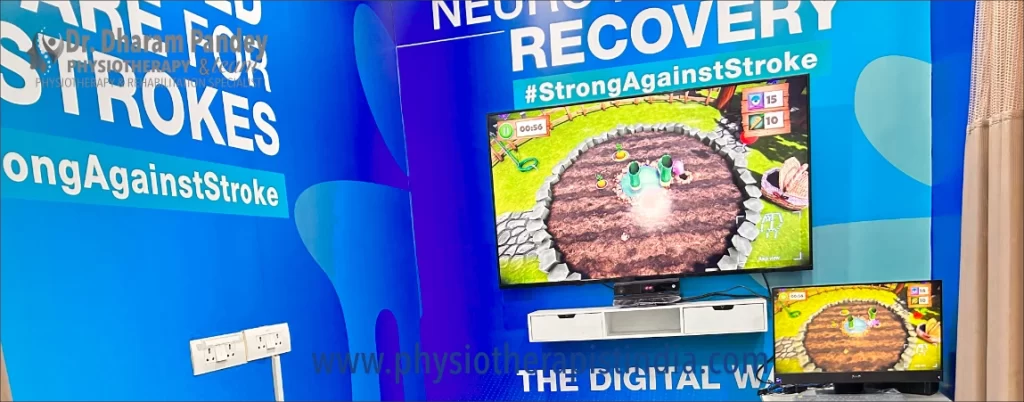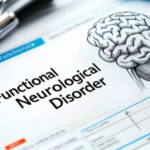VIRTUAL REALITY FOR STROKE REHABILITATION
Virtual Reality (VR) in Stroke Rehabilitation: Enhancing Recovery through Immersive Technology
Stroke is a leading cause of long-term disability worldwide, often resulting in physical impairments that can significantly impact a person’s ability to perform daily activities and maintain independence. Traditional stroke rehabilitation methods focus on repetitive exercises and functional tasks to promote motor recovery and improve functional outcomes. However, these approaches can be time-consuming, costly, and sometimes monotonous, leading to reduced patient motivation and engagement. In recent years, Virtual Reality (VR) has emerged as a promising tool in stroke rehabilitation, offering an interactive and immersive environment that can enhance the recovery process. In this article, we will explore the potential benefits and applications of VR in stroke rehabilitation, highlighting its ability to provide engaging and tailored interventions for patients.
Applications of VR in Stroke Rehabilitation:
1. Motor Skill Training: VR can be used to provide targeted motor skill training for stroke survivors. By using motion tracking sensors and specialized VR software, patients can engage in virtual activities and exercises that simulate real-world movements. For example, patients can practice reaching, grasping, and manipulating objects in a virtual environment, allowing for repetitive and task-specific training.
2. Balance and Gait Training: Balance and gait impairments are common after stroke and can significantly affect mobility and quality of life. VR can provide a safe and controlled environment for patients to practice balance and gait exercises. By using VR simulations that mimic different terrains and obstacles, patients can improve their balance, coordination, and confidence in a virtual setting before transitioning to real-world scenarios.
3. Activities of Daily Living (ADL) Training: VR can be utilized to simulate ADL tasks, such as cooking, dressing, and grooming, which are crucial for stroke survivors’ functional independence. By providing a virtual environment that replicates these activities, patients can practice their skills, receive real-time feedback, and gradually regain their ability to perform daily tasks.
4. Cognitive Rehabilitation: Stroke can also impact cognitive function, including attention, memory, and executive functions. VR can be used to create cognitive training exercises that challenge and stimulate these cognitive abilities. For instance, patients can engage in virtual puzzles, memory games, and problem-solving tasks to improve cognitive skills and promote neuroplasticity.
5. Psychological Support and Motivation: Stroke rehabilitation can be emotionally challenging for patients, and maintaining motivation throughout the recovery process is crucial. VR can provide a supportive and engaging platform that promotes motivation and enjoyment in rehabilitation. By incorporating gamification elements, such as rewards, challenges, and social interaction, VR can enhance patient engagement and foster a positive rehabilitation experience.
Effectiveness and Benefits of VR in Stroke Rehabilitation:
Studies have shown promising results regarding the effectiveness of VR in stroke rehabilitation. VR-based interventions have been found to improve motor function, balance, gait, and activities of daily living when compared to conventional therapy alone. The immersive nature of VR allows patients to receive real-time feedback, facilitating motor learning and increasing patient engagement. VR also offers a motivating and enjoyable experience, which can positively influence adherence to rehabilitation programs and long-term recovery outcomes.
The Benefits of VR in Stroke Rehabilitation include:
1. Increased Engagement and Motivation: VR environments are inherently engaging and provide patients with a sense of presence and immersion. This increased engagement can lead to higher motivation levels, promoting active participation and adherence to therapy programs.
2. Task-Specific Training: VR allows for task-specific training in a controlled and adjustable environment. Patients can practice activities that are relevant to their daily lives, improving functional outcomes and promoting transfer of skills to real-world settings.
3. Real-Time Feedback: VR systems can provide immediate and accurate feedback on performance, allowing patients to adjust their movements and receive guidance on correct techniques. This feedback loop facilitates motor learning and encourages patients to refine their movements.
4. Personalization and Adaptability: VR systems can be customized to meet individual patient needs, providing tailored interventions and adjusting the difficulty level based on each patient’s abilities. This adaptability ensures that therapy remains challenging yet achievable, promoting continuous progress.
5. Enhanced Neuroplasticity: VR has the potential to promote neuroplasticity, the brain’s ability to reorganize and form new neural connections. By providing intensive and repetitive training in a stimulating environment, VR can enhance neural plasticity and support functional recovery.
Best Physiotherapy Center in Delhi and VR Integration:
If you are searching for the best physiotherapy center in Delhi, it is crucial to choose a center that embraces innovation and utilizes cutting-edge technologies like VR in their rehabilitation programs. Dr. Dharam Pandey and his team at our center understand the potential of VR in stroke rehabilitation and are committed to providing exceptional care and advanced technology to their patients. Our center offers a comprehensive approach to rehabilitation, combining evidence-based therapies with the latest technological advancements, including VR gaming rehabilitation systems.
Virtual Reality has emerged as a powerful tool in stroke rehabilitation, offering a range of applications and benefits for patients. By providing an immersive and interactive environment, VR can enhance motor learning, improve balance and gait, promote cognitive recovery, and increase patient motivation and engagement. While further research is still needed to fully understand the long-term effectiveness and optimal integration of VR in stroke rehabilitation, the initial results are promising. If you are looking for the best physiotherapy center in Delhi, consider a center that embraces innovative technologies like VR to provide personalized and effective rehabilitation programs. With the guidance of skilled healthcare professionals, VR can be a valuable asset in helping stroke survivors regain their independence and improve their quality of life.







